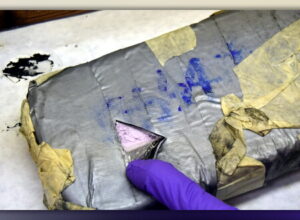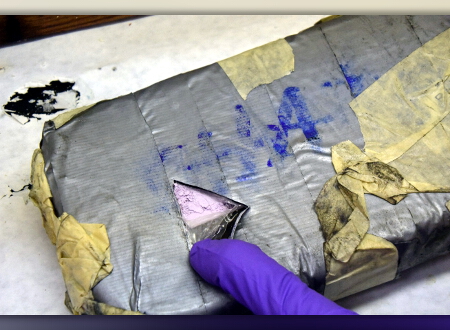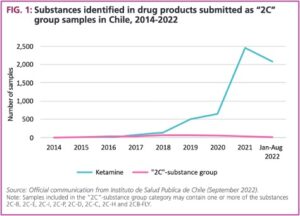
There is a “new” club drug gaining attention and interest: pink cocaine. According to NBC News, an initial toxicology report indicated pink cocaine was one of the substances in the system of former One Direction singer, Liam Payne, when he fell to his death from a hotel balcony in Buenos Aires, Argentina. And The New York Times reported when Sean Combs was arrested in September, a pink powder was found in his hotel room. However, the name “pink cocaine” is a misnomer, as it rarely contains cocaine and is dyed pink with food coloring.
Pink cocaine is also known as “tuci,” (or tusi) a phonetic translation for “2C,” a series of psychedelic phenethylamines with stimulant, psychedelic and entactogenic (promotes emotional openness, like with MDMA) properties. An article published in The American Journal of Drug and Alcohol Abuse said 2C-B was first synthesized by the American chemist Alexander Shulgin in 1974. While there are dozens of 2C compounds, 2C-B is the most common and desired of the 2C series of drugs. Its effects are commonly described as a “light” high when compared to other psychedelics. Users tend to report euphoria, a sense of well-being, changes in perception and slight hallucination.
Erowid, an organization that provides “access to reliable, non-judgmental information about psychoactive plants, chemicals, and related issues,” posted the following Timeline for 2C-B.
| 1974 | 2C-B is first synthesized by Alexander Shulgin during an exploration of the homologues of DOB. | |
| 1975 | First publication on 2C-B, by Alexander Shulgin and Michael Carter. | |
| Jun 25, 1975 | Psychoactivity of 2C-B first discovered by Alexander Shulgin. Described as ‘beautifully active’. | |
| Late 1980s | 2C-B is marketed as an MDMA (ecstasy) replacement and becomes somewhat more popular after MDMA is scheduled in 1985. | |
| 1991 | Alexander and Ann Shulgin publish PiHKAL, documenting over 250 phenethylamines, including MDMA, mescaline, 2C-B, 2C-T-7, 2C-T-2, and many others. | |
| Jan 6, 1994 | 2C-B added to Schedule I through the emergency scheduling process, making it illegal to possess or sell in the United States. | |
| Jun 2, 1995 | 2C-B placed “permanently” into Schedule I in the United States. | |
| 1997 | 2C-B becomes illegal in the Netherlands. | |
| Jun 1998 | 2C-B becomes illegal in Japan. |
The DEA noted that when 2C-B became harder to get, drug organizations began making a drug cocktail, dying it pink, and selling it as pink cocaine. The actual substances in the pink cocaine you buy today are not known until it is tested. Every batch is different and the only commonality is its bright pink coloring. Currently, it is not a commonly trafficked substance and it is “typically found in urban areas with active night club scenes like Miami, New York, and Los Angeles.”
Disguised as MDMA/ecstasy, 2C-B began to emerge as a recreational drug at raves in the 1990s. Although its prevalence was rare, by the early 2000s, it had been encountered by law enforcement in 48 US states. Within New York City nightclubs in 2016, lifetime prevalence of 2C use was estimated at 4.9%, with 62% of attendees unfamiliar with this class of drug. Reported willingness to use these drugs, if offered, increased from 1.9% to 4.5% between 2017 and 2019. “Given the increasing demand for 2C series drugs (based on survey and seizure data), this created an opportunity for illicit manufacturers to create and market a cheaper copycat version of the drug.” According to the NYT:
The drug has had a growing presence in the U.S. In September, the Drug Enforcement Administration said that the distribution of pink cocaine was increasing, and that it was mostly sold online and through social media. In a national assessment of drug threats this year, the agency also said that the Sinaloa Cartel in Mexico was increasingly manufacturing and trafficking the drug cocktail.
It’s not known to what extent people using tuci are aware of its potential contents. “Most drug-checking studies reporting on its contents have been conducted in Latin America where the concoction appears to be most popular.” These studies typically find tuci is a cocktail combining ketamine with MDMA, methamphetamine, opioids, new psychoactive substances, and sometimes cocaine. One study in Chile found that 99% of “tuci” samples contained ketamine and less than 1% contained actual 2C series drugs. See the following figure, originally in the Global Smart Update 2022, volume 27, from the United Nations Office on Drugs and Crime (UNODC):
A drug checking study that analyzed drug samples submitted at fixed sites and dance festivals throughout Colombia detected a wide range of drugs in tuci including ketamine, MDMA, 3,4-methylenedioxyamphetamine (MDA), cocaine, methamphetamine, synthetic cathinones, 1-(4-Bromo-2,5-dimethoxyphenyl)-2-aminopropane (DOB), local anesthetics such as lidocaine, and opioids such as oxycodone and tramadol [2C-B was typically not detected].
Users in Latin America may not be aware that ketamine or other psychoactive substances are in products sold as tuci, increasing the health risks associated with its use. People could think this is a new and perhaps benign drug, or a form of cocaine. This can lead to unpredictable effects. “Regardless of what people who use believe is in this concoction, batches tend to greatly fluctuate regarding which drugs and how much of them are mixed in.” The various drugs in tuci/pink cocaine can also have negative synergistic effects.
This significantly increases the risk of overdose and adverse reactions. The Week said pink cocaine is referred to as “Russian Roulette,” because of the variance between batches. The DEA reported on September 13, 2024 that a long-term investigation led to the arrest of a New Jersey man selling cocaine and pink cocaine in locations across Manhattan. Laboratory analysis of the pink cocaine indicated the presence of ketamine and MDMA. In May of 2024, the U.S. Coast Guard seized pink cocaine among other drugs off the coasts of Mexico and Central and South America. The author of The American Journal of Drug and Alcohol Abuse article cited above said this was the first time he heard of large batches being imported into the U.S. as tusi:
All you need is one drug dealer to mix fentanyl into their tusi batch. . . They have the ability to poison a bunch of people.
While efforts are increasing to warn the public of the dangers with pink cocaine/tusi and get it off the streets, the drug’s adverse effects might worsen. Researchers are concerned that fentanyl may begin to appear in pink cocaine, increasing the risk of over dose and death. “As tusi acquires more popularity as a mystery powder, more people may create their own drug amalgamations to sell under its name.” Sadly, this is already true. A task force in California seized 4.4 pounds of pink power containing ketamine and a relatively inactive fentanyl precursor on May 16, 2017.






